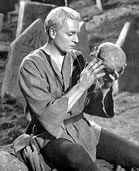I promise to not write solely about my EdX course, but…it is live as of this morning. And in the first three hours of being live, we have had students posting in the discussion forum from every continent outside of Antarctica. Students from Brazil, Chile, Colombia, Estonia, Spain, UK, Belgium, Netherlands, India, East Timor, Morocco, South Africa, and on and on. I admit to being somewhat blown away by this, even though I expected it and intentionally structured the course in anticipation of this kind of audience.
A diverse classroom can be wonderful for any topic, but I will reiterate that it is especially wonderful for a class focused on human evolution and the human fossil record. Evolution is a process focused on sorting, creating, and changing patterns of variation through time. And yet variation, even the variation in ourselves and those around us, is an inherently tricky topic to wrap your mind around. Our words, and the concepts we use to give meaning to the world around us, are not particularly flexible when it comes to variation (as an example, write a 5-second definition of “tree” on whatever scrap of paper is nearby, and then look outside and see how adequately your definition accounts for the diversity of trees you see before you…probably not very well). We even have developed an entire discipline, statistics, to help us describe and manipulate variation in a way that is translatable and coherent. Variation is a challenge, and yet it is central to how evolution operates.
 Contrast this with the fossil record, where our entryway into understanding variation comes from individual fossil specimens, scattered across time and space. As it turns out, the human fossil record is quite well represented and well-studied, but it still poses a significant scientific challenge to move from looking at isolated fossils to reconstructing patterns of biological variation in the past.
Contrast this with the fossil record, where our entryway into understanding variation comes from individual fossil specimens, scattered across time and space. As it turns out, the human fossil record is quite well represented and well-studied, but it still poses a significant scientific challenge to move from looking at isolated fossils to reconstructing patterns of biological variation in the past.
The bridge that lets us do this is typically comparisons with living patterns and the variation present in contemporary biological systems. And yet, the world is a big place, and our view of it is fairly limited to a particular time and place. But that is where this global classroom comes into play. Within our class, we have an audience coming from all over the world, of all ages, with a host of backgrounds. We represent an abundant spectrum of living human biological variation. And throughout this class, we will take advantage of that fact to better understand, interpret, and develop scientific knowledge from the human fossil record.

I just enrolled in your class, and I am really enjoying it. I love the “your turn” component, where the participants generate potentially huge datasets on human biological variation. I sometimes teach introductory physical anthropology and human evolution classes at a university. Do you have any plans to make the “your turn” data available to other scientists/teachers?
Dear Professor,
Great blog! Could you add a ‘follow by email’ button so we have the option of getting posts fed to email? Thanks!
Kathryn